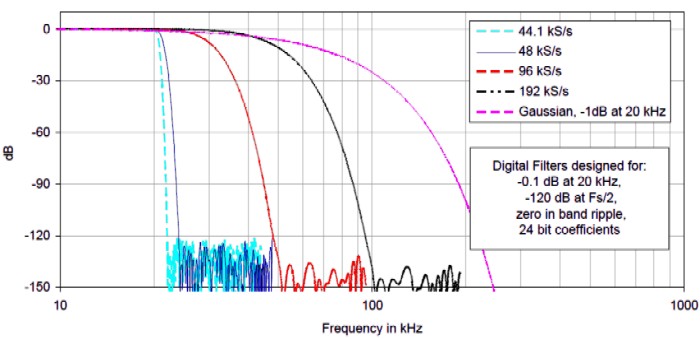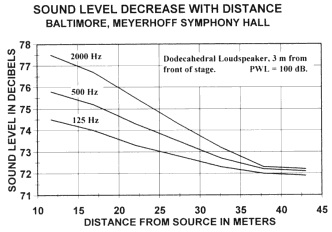
I t is known that energy in the 5-20 KHz range can be perceived even when it is 50 dB or more below the main voice spectrum peak. Also, these upper frequencies are conventionally emphasized in the production of popular vocal music. Yet very few studies of the acoustic content of this range have been made. High fidelity recordings were made of singers sustaining vowels at varying levels of vocal effort. A general characterization of the two highest octaves 5-20 KHz was sought. The prevalence of high-frequency energy, the variation of harmonics signal-to-noise ratio as a function of frequency, and the covariation with overall SPL were all highly variable, but several landmark features were identified... [including] clusters of resonances in the regions 7-10 KHz and 13-16 KHz. Harmonic energy was observed to over 16 KHz in strong female voices.”T he Tallis Scholars’ performance in Kansas City tonight was gorgeous. The concert was performed in the Cathedral of the Immaculate Conception, which has a central altar and a wide chancel such that there are myriad acoustic reflections that arrive at one’s ears from multiple directions. Unlike many performance venues where reflected sound for people seated in most locations is predominantly from one or two general directions, Immaculate Conception has quite high reflective efficiency from many of its interior surfaces.
— Sten Ternström, KTH Stockholm, 2008.
I f you are seated close to the ensemble—not more than, say, 10 meters away from the sound source—the sound projects exaggerated cues of ‘spatiality’, accentuating the atmospheric qualities that are there in the music and the text. This was especially true tonight during the pieces by Arvo Pärt, which have considerable dissonance and frisson amongst the parts, with long sustained notes during which the spatial effects from the direct and indirect sounds arriving at our ears can be fully appreciated.
T aking into account the speed of sound, we can convert energy defocusing in the time domain to “smear” in distance estimation by the ears. Energy spread over ±500 ms is the same as a distance smear of ±15 cm. 96 KS/s keeps almost all the energy within about ±50 ms, or ±1.5 cm. One of the observations people make about 96 KS/s material is that the spatial localisation of everything is very much better than 44.1 KS/s. 192 KS/s is better than this, although very dependent on amp and speaker performance to demonstrate it.”
— Mike Story, 1997.

T he spectrum of frequencies and harmonics returning to your ears in this marble-and-plaster, highly-reflective cathedral has a surprising, pleasing amount of power in the range 4 KHz and up. In an age when noise and unpleasant/irrational/blurred stimuli bombard us every day, the Tallis Scholars’ sound in this sort of brightly reverberant performance space restores our belief in clarity—restores our belief in the fidelity of human communication across large distances in space and time. It is as though high signal-to-noise ratio becomes an aesthetic and cultural emblem of Civilization itself.
W hat I mean is, the sound (with its high S/N and high-end harmonics) not only embodies the enduring and transcendent meaning of the sacred music that Tallis performs and the human spirituality that caused this music to be written so long ago, but it asserts the very possibility of transcendence and persistence—of meaning that lasts beyond one’s own lifetime. After the concert, I go to Gimell Records’ website and download a couple of their 24-bit 176 KHz-sampled Studio Master high-def recordings, to get more of this. What I hear is truly thrilling—as good as the live performance.
C onventional wisdom doubts that humans can hear frequencies much higher than 20 KHz—frequencies higher than that are only perceptible to dogs and other animals. That is foolish—misinformation propagated uncritically since 50 years ago. In recent years, the misconception persists as a reflection of the fact that otolaryngologists’ and audiologists’ primary focus has been on “basic,” “practical” functions such as a person’s ability to hear and accurately understand speech. By contrast, research concerned with aesthetic and musical functioning has received much less attention or funding. [Measurement equipment for studying acoustics of bats in the 20 to 100 KHz part of the spectrum has existed for quite awhile—bat and bird and other animal communication is the subject of scholarly articles in acoustics society journals—but not many researchers studying humans have utilized it. Part of the reason why the freqency spectrum above 4 KHz for vocalizations has been under-studied is that high-speed video strobolaryngoscopy has been unable to detect the very small-amplitude (~0.1mm) vibrations in the larynx. Not surprisingly, if you can’t detect something, then you tend not to study what you can’t detect.]
T here is a common, mistaken notion that frequency response above 10 KHz is only relevant to sibilant “S” or fricative “F” type consonants in speech or singing. Well, that is most definitely not true, as evidenced by tonight’s Tallis Scholars performance! Recent research by Brian Monson, Andrew Lotto, and colleagues at the University of Arizona in Tucson (link below) shows that the frequency spectrum above 8 KHz figures prominently in singers’ sustained-vowel sound imaging—and figures also in listeners’ perception of open vowel sounds. The Pärt works in tonight’s program—and the effects of reverberation in these, in Immaculate’s chancel—especially emphasize intervallic and spatial relationships and transformations, and remind me of a workshop led by John Roeder at the 2003 Mannes Institute. That workshop examined expressive transformational representations for music by Pärt and others, and addressed how transformational representations relate to musical form, and to how musical forms are experienced. Varied repetition as in Pärt amounts to retracing similar transformational pathways among different sets of musical objects, and plumbing the extent and meaning of their similarities. Canon and contrapuntal cyclical spaces are frequent vehicles for enacting or showing transformations, of course, and—to the degree that each of these enactments is individually convincing—uncovering these unexpected connections becomes our primary mode of understanding and enjoying the music.
T onight’s performance and these HD Gimell/Tallis recordings reveal why it’s desirable to have a sampling frequency that is at least 4 times the desired system bandwidth, a process that is known as oversampling. If your goal is to maintain a “flat” response with 6 dB or less roll-off at the upper limit of the band, then a sampling frequency that is more than four times the desired bandwidth is needed—hence, the 176.4 KHz or 192 KHz sampling rates on these Gimell HD Studio Master files.

A problem (for me, at least) with off-the-shelf HD audio equipment is that the sound reproduction chain (player, preamps, EQ, power amps, speakers) can sometimes have too much high-frequency power. It can sound too sibilant—even for vowel sounds—somewhere between 12 KHz and 20 KHz. The spectrum EQ sliders on your playback equipment may not have center frequencies that correspond to wherever that objectionable tweeter “break-up frequency” peak is—so the adjustments you make to cope with it end up impairing the quality of the sound around that peak, essentially leaving you with a sound that's far less than HD. But Bowers & Wilkins speakers are one example of a product that doesn’t have this issue. They’re clear above 8 KHz, and give smooth mid-range and ample bass. Put two 800 Diamonds in front of you, two 802s behind you, plus a couple of DB1s somewhere in the room to cover the bottom bass frequencies. HD music recordings—such as those produced by Tallis and Gimell—have frequencies that exceed 20 KHz and we need speakers (and other components in the reproduction chain) that can accurately render these. The response of the 800Ds is essentially flat between 25 Hz and 33 KHz. Their tweeter “break-up” frequency is way, way out of harm’s way—at about 70 KHz.
R eproducing high frequencies has everything to do with recreating the sensation of sharpness and immediacy—the experience of being near the sound-source, in or near the front row (see Beranek, p. 511). There is not just the issue of rapid attenuation of high-frequency portions of the spectrum as a function of distance, but also the matter of inter-aural time-difference cues.
W e found that robust pitch perception can be elicited by harmonic complex tones with fundamental frequencies below 2 KHz, even when all of the individual harmonics are above 6 KHz—well above the currently-accepted ‘existence region’ of pitch and above the currently-accepted limits of neural phase-locking. The results suggest that perception of musical pitch at high frequencies is not constrained by temporal phase-locking in the auditory nerve but may instead stem from higher-level constraints shaped by [immediately] prior exposure to harmonic sounds.”I n other words, our ability to perceive (a) spatial relationships—relative locations of different singers or depth and breadth of other sound-sources—and (b) overtones/harmonics generated by the blending of all of the lower frequencies in ensemble (Fourier spectra of mixed signals) ... depends primarily on the high-frequency (short-wavelength) components and on phase-angle relationships between the frequencies as they mingle with each other in the performance space (or the playback environment, for a recording). If the sound-sources are moving (as in an opera; or even for singers who are shifting or rotating slightly on-stage), then the high-frequency components contribute most to our ability to perceive that motion. It’s part of how our brain sorts out “signal” from “noise” in noisy environments.
— Andrew Oxenham, Christophe Micheyl, Michael Keebler, Adam Loper & Sébastien Santurette, Dept of Psychology, Univ Minnesota, 2011.
A nd we get special pleasure from successfully doing this. Clarity that facilitates the listener’s own brain’s processing—which is what the HD 176 KHz/192 KHz-sampled media does for us (see Vorländer, pp. 222ff).
- Jan Pieterszoon Sweelinck - Hodie Christus Natus Est
- John Taverner - Magnificat (A5)
- Robert White - Tota Pulchra Es
- Arvo Pärt - Magnificat
- Arvo Pärt - Nunc Dimittis
- Hieronymous Praetorius - Magnificat IV
- Robert White - Regina Caeli
- Morales - Regina Caeli
- Benjamin Britten: Hymn to the Virgin
- Giovanni Pierluigi Da Palestrina - Magnificat for Double Choir
- Giovanni Pierluigi Da Palestrina - Nunc Dimittis for Double Choir
B efore you place an order, Gimell recommmends to try the Test Files they provide for free download, to insure compatibility with your system.
T allis and Gimell recommend using an audiophile-quality Network Music Player to listen to the HD download files. If you own a DVD-Audio player and your PC has a DVD burner, then you can create your own DVD-Audio discs by importing the HD download files into Cirlinca’s DVD-Audio Solo® or other similar software apps. The files are 15 to 18 times larger than the equivalent track with MP3 compression. The Gimell offerings also include multichannel Quadraphonic/Surround Sound formats. Cirlinca’s HD-Audio Solo Ultra® v4.1 software costs just USD$75 for a single-user license— HD-Audio Solo Ultra® is the product that I use. Cirlinca has relationships with record labels including Gimmel, Deutsche Grammophon, and Hyperion, plus orchestras and ensembles including Boston Symphony Orchestra, Philadelphia Orchestra, and many others.
M arketing-wise, when HD recordings such as these from Tallis/Gimell are coupled with correspondingly good playback chain equipment it opens up a promising (and to-date under-developed) market segment for serious music: tech-avid audiences and software developers and gamers whose primary passion is virtual reality (VR) and who have a strong but decidedly secondary interest in music. Many in this segment or niche market may not be musicians per se, and they may not be people who regularly attend ‘conventional’ live concerts. But they crave excellent VR and immersive “worlds” that can capture the heart and mind—as good music can do so effectively. And such people spend quite a lot of money each year on personal “world-building”. Their sort of passionate “sonic-experience-first-music-second” amateurism is, I suppose, not unlike serious HiFi audiophiles of the 1960s or late 50s.
I n summary, Tallis Scholars and Gimell are creating the right kinds of HD content to grow a VR audio market. Maybe more and different marketing, including social media, will be needed to really drive its growth. For now, I’m delighted to have experienced these wonderful recordings that prove once and for all that very high sampling-rates of 176.4 KHz and 192 KHz are actually necessary, to accurately reproduce the nuances that we hear up-close in live performance. The freshness and lightness and clarity of the sound invite the listener “inside” the world that the music conjures—the Studio Master HD files enable listeners to inhabit that world via interactive replay evoking “live” sensations and realism, most vividly when the listener/file-downloader can freely explore and re-explore again and again ad lib. We avid listeners want to rehearse our neurons—not only to re-experience the shivers up our spines, but (through practice) to train our bodies to optimally respond to the aural cues that are in these beautiful HD recordings, and in the next live performance we’re able to attend. Bravo!
- Tallis Scholars website
- Gimell Records website
- OnThingsImportant blog (“Tallisman” aka Peter Phillips)
- Steve Smith, recording engineer and General Manager, Gimell Records, interview with John Quinn, MusicWebInternational, 2010
- Cirlinca HD audio software
- Logitech Squeezebox Transporter® SE - Network Music Player
- HDtracks.com
- Passionato.com
- iTrax.com online Forum
- Audio Expo North America (AXPONA), 09-12 MAR 2012, Jacksonville, FL
- EnjoyTheMusic.com online HD audio Review ezine
- Stereophile.com
- The Absolute Sound (AVguide.com)
- Auditory Cognitive Neuroscience Experience Lab at Univ Arizona Tucson
- Bowers & Wilkins 800-series speakers (video shows testimonial by pianist Alfred Brendel at 0:26)
- B&W brochure pdf [p. 6 shows graphs of conventional aluminum-dome tweeter with 25 dB peak around 30 KHz, vs. B&W tweeter-dome material with smaller peak shifted far-far-right out of range of hearing, beyond 70 KHz]
- Sampling Rate page at Wikipedia
- DVD-Audio page at Wikipedia
- Cirlinca DVD-Audio mastering software
- Minnetonka discWelder DVD-Audio mastering software
- Steinberg WaveLab DVD-Audio mastering software
- Bowers & Wilkins website
- NagataAcoustics.co.jp (Yasuhisa Toyota)
- JaffeHolden.com (Mark Holden)
- KEMAR head-related transfer function measurements at MIT Media Lab
- Institute of Acoustics (IOA U.K.)
- Acoustical Society of America
- BSI EN-60268-4:2010 standard for sound system equipment. British Standards Institute, 2010.
- Bartlett B, Bartlett J. On-Location Recording Techniques. Focal, 2006.
- Beranek L. Concert Halls and Opera Houses: Music, Acoustics, and Architecture. 2e. Springer, 2003.
- Chan R, et al. Biomechanics of fundamental frequency regulation: Constitutive modeling of the vocal fold lamina propria. Logop Phoniatr Vocol 2009;34:181-9.
- Fastl H, Zwicker E. Psychoacoustics: Facts and Models. 3e. Springer, 2006.
- Figuerido R, et al. Incidence of tinnitus in MP3 player users. Braz J Otorhinolaryngol 2011;77:293-8.
- Hall R. Review of Lewin 'Musical Form and Transformation.' J Am Mus Soc. 2009;62:205-22.
- Honda K, et al. Hypopharyngeal cavities and vocal-tract acoustic modelling. Comput Meth Biomech Biomed Eng 2010;13:443-53. [spectra above 2 KHz]
- Klumpenhouwer H. 2006. ‘In Order to Stay Asleep as Observers’: The nature and origins of anti-Cartesianism in Lewin’s generalized musical intervals and transformations. Music Theory Spectrum 2006;28:277–89.
- Lamesch S, et al. Phonetograms of laryngeal source parameters for vowels and laryngeal mechanisms of singers. Proc Acoust Soc Am. 2008;123:3243 (Abstract 2pMEe4)
- Lamesch S, et al. Frequency jumps during laryngeal mechanism transitions: Influence of vowel, sound pressure level, and starting note. 4th Intl. Physiology and Acoustics of Singing Conference, San Antonio, 2009.
- Lewin D. Musical Form and Transformation. Yale Univ, 1993.
- Malecki P, Wiciak J. Acoustic parameters of Russian Orthodox vs. Roman Catholic churches: Overview and preliminary psychoacoustic tests using choral music. Proc AES 130th Annual Conf 2011;Abstract 8439.
- Monson B, Lotto A, Ternström S. Detection of high-frequency energy changes in sustained vowels produced by singers. J Acoust Soc Am. 2011;129:2263-8.
- Oxenham A, et al. Pitch perception beyond the traditional existence region of pitch. PNAS 2011;108:7629-34.
- Story M. Suggested explanation for (some of) the audible differences between high sample-rate and conventional sample-rate audio materials. AES, 1997.
- Takemoto H, et al. Acoustic analysis of the vocal tract during vowel production by finite-difference time-domain method. J Acoust Soc Am 2010;128:3724-38.
- Tsai C, et al. Laryngeal mechanisms during human 4 KHz vocalization studied with CT, videostroboscopy, and color Doppler imaging. J Voice 2008;22:275-82.
- Sten Ternström page at Speech, Music, & Hearing Division, School of Computer Science and Communication, KTH (Kungliga Tekniska Högskolan), Stockholm
- Ternström S. Hi-Fi voice: Observations on the distribution of energy in the singing voice spectrum above 5 KHz. J Acoust Soc Am. 2008;123:3379.
- Ternström S. Hearing myself with others: sound levels in choral performance measured with separation of one's own voice from the rest of the choir. J Voice 1994;8:293-302.
- Vorländer M. Auralization: Fundmentals of Acoustics, Modelling, Simulation, Algorithms and Acoustic Virtual Reality. Springer, 2008.
- Witzsch J, Fessler H-U. High-resolution-Downloads promise musical enjoyment like listening directly to the mastertapes: Are they able to replace DVD-Audio and SACD? Steroplay, JUL-2009.

No comments:
Post a Comment